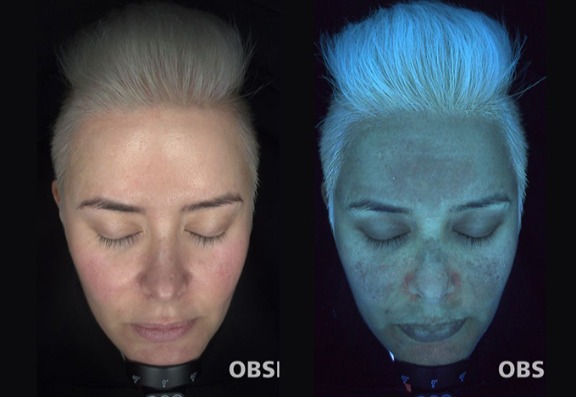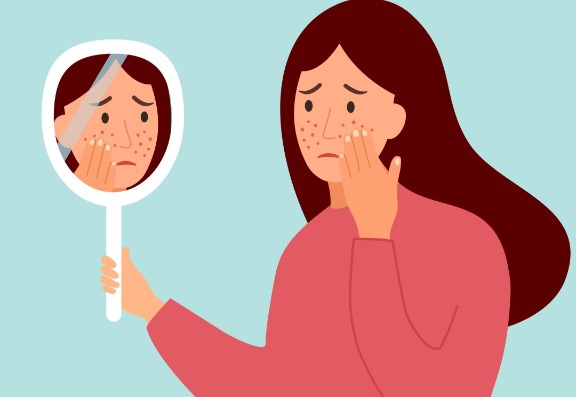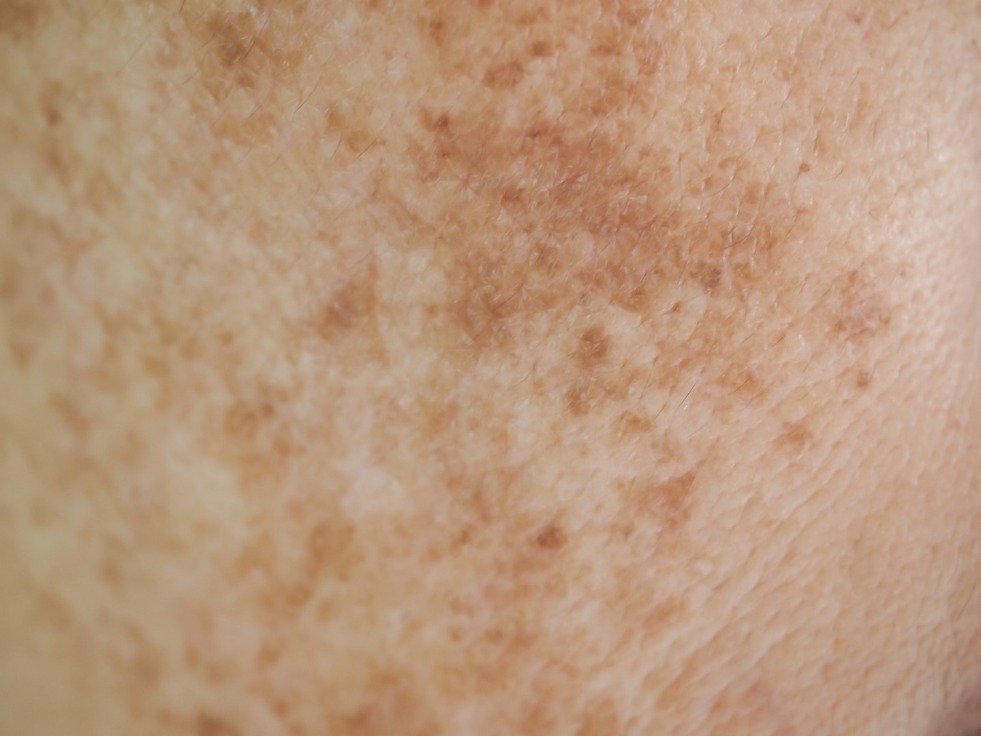Chemical peels, micro-needling, and Vitamin C are all treatments for pigmentation.
How do we get those pesky patches of discoloured skin, and how do we treat them? Read on….
Summer is upon us, and the longer days make us feel that there’s so much more living to do! Whilst many of us are preparing to brave the flight shortage and see if we can head for even sunnier climes, others are looking at staycations in the UK.
One thing is for sure: we all adjust our wardrobes for sunnier skies, but how should we be adjusting our skincare?
Yes, yes, yes… everyone knows that we should be using SPF daily, but surely that’s only when the sun is out and really hot, right?
If you burn a little from time to time, it heals fast enough, so where’s the problem, apart from the sore skin and lizard-Esque peeling?
I mean, what’s really going to happen if the sun bathes your shoulders and nose a little… everyone loves it when they’re a little sun-kissed.
Your skin is always going to be my priority. With the vast proportion of my patients choosing age reversal treatments, I think it’s wise to remind everyone that the sun, or rather UV, isn’t just for summer, and the damage that you are perhaps seeing now isn’t as a result of a recent trip away.

Pigmentation and sun damage are real, and the older we get, unfortunately, the more visible it becomes. UV changes the pigment in your skin, and it can penetrate through glass. So, if you are in the car, in the conservatory, next to a window in winter, spring, summer or autumn, you should wear sunscreen. For your face, a 30 SPF in the cooler months and a 50 SPF in the summer months, with regular applications and not just once a day.
*ALARM* 80% of ageing is a direct result of exposure to ultraviolet light (UV)
The more time you spend in the sun, without SPF, plus a sun hat and some shade, it will result in your skin ageing faster than others who have been and are being more careful. If you are reading this in your 20s or even in your teenage years, make yourself a little deal… always cleanse off your make-up after a night out (not with a face wipe) and wear an SPF religiously… even if that’s the only thing you do!

As we travel through our 30s and into our 40s, we can see darkening on our skin in patches, then as we glide into our 50s and beyond, we begin to see those liver spots on the backs of our hands and age spots on our face.
Those little spots appearing on the backs of your hands can be spotted when stuck in traffic and you’re analysing the backs of your hands – (yes, we all do that!), so there’s another little lesson… put your SPF first onto the back of your hands and then onto your face!
Do this from an early age, but even if you’ve never done it before, you know you’ll be doing your bit and your best!
How do we get pigmentation?
Sun damage- exposure to UV rays. The results can be seen over time, and you may see darker patches of skin, freckles and some discolouration.
Melasma - what’s that?
It’s a type of pigmentation associated with hormones and freckles. You may have experienced or seen in friends and family that when pregnant, there is some discolouration on the skin. In general, this fades and dissipates after pregnancy, but not always. Medication can also play a part in pigmentation.
Interestingly, I have melasma, and I will share my treatment journey with you through my before-and-after shots. Every year, I need to work on my pigmentation, although you wouldn’t have a clue to look at me now.
From first-hand experience, I will share my treatment and the results with you, for you to know what is possible, along with real results.
Acne can traumatise the skin, causing pigmentation and scarring, and even some skin treatments will have this effect; if chemical peels and products are too strong and they are combined with exposure to UV, the result can be pigmentation.

So what are the triggers?
A common trigger is skin tone; pigmentation can affect darker skin, resulting in lighter or darker patches. Other triggers can be Increased oestrogen levels in pregnancy, sun exposure and certain drugs.
How can I get rid of my pigmentation?
The answer is… that it’s not easy. Pigmentation, once you have it, is like a boomerang, and it just keeps coming back. The cooler months are the best time to treat pigmentation, as just a session in the sun can see it returning. Yes, it’s that simple! Pigmentation is a stubborn enemy, and it can take skin treatments a year to suppress the cells that produce the pigment. One day in the sun can undo all that work.
Fight and prevention
SPF.
Sun protection is vital, and that includes hats and stepping out of the sun and into the shade.
Shop
Vitamin C… and vitamin E are key, and because not all products are created equal, and because many of us tend to get choice paralysis when selecting skincare, let me make this easier for you. Serums and other facial products containing L Asorbic Acid are recommended. If those products also contain vitamin E this will assist in the effectiveness of the vitamin C in the skin. Vitamin C, combined with SPF, is the most effective way to treat and prevent further pigmentation. Try a 15% to 30% L Asorbic Acid formulation for optimum results, Antioxidants like vitamin C, vitamin E and Niacinamide all contribute to the fight against and prevention of pigmentation.
Treat
Chemical Peels are the answer to pigmentation. These can either be completed in small courses and at medium depth, or a deeper peel can be more effective for quicker results, it all depends on how much downtime you can spare. A deeper peel would mean that the skin could be more irritable and visibly red for some time after treatment.
Micro-needling is another super-successful strategy for delivering those healing ingredients deeper into the skin. Micro-needling allows us to access the deeper layers of the skin through micro channels to infuse the skin with brightening agents. Typically, results would be visible after a series of 6 sessions.

If you would like to see how I can help you with your skin tone and pigmentation, then let’s chat! No pressure, let’s look at your skincare and how serious you are about treating it.
Happy summertime!
If you want to read more, the experts at Consulting Room really know what they're talking about and have put together some Chemical peels, micro-needling, pigmentation, SPF, Melasma, Acne and scarring FAQs just for you.
If you have more questions, you can use the Chemical peels, micro-needling, pigmentation, SPF, Melasma, Acne and scarring questions feature to talk to our panel of trained medical experts.
If you're keen to get started with any of these treatments right away then you're in luck - those clever folks also have a list of trusted, accredited Chemical peels, micro-needling, pigmentation, SPF, Melasma, Acne and scarring clinics in your area.
Many thanks to the author of this blog Dr Raquel Amado who is from Dr Raquel Skin and Medical Cosmetics.
Throughout her career, Dr Raquel has understood that most people are looking for a reliable, honest relationship with their practitioner, which is why she takes the time to understand how her patients feel.
Dr Raquel is known for her friendly and caring manner, being discreet, and putting her patients at ease.
She is committed to the provision of safe, high-quality patient care in order to achieve the best outcomes for patients, and make them feel confident in their own skin.
Call Dr Raquel Skin and Medical Cosmetics on 01732 525 875 or visit www.skinandmedicalcosmetics.co.uk.

Hey, wait!
Before you go.....
Let's stay in touch, pop your details here and we'll send our editor's hand-picked updates on your fave subjects.